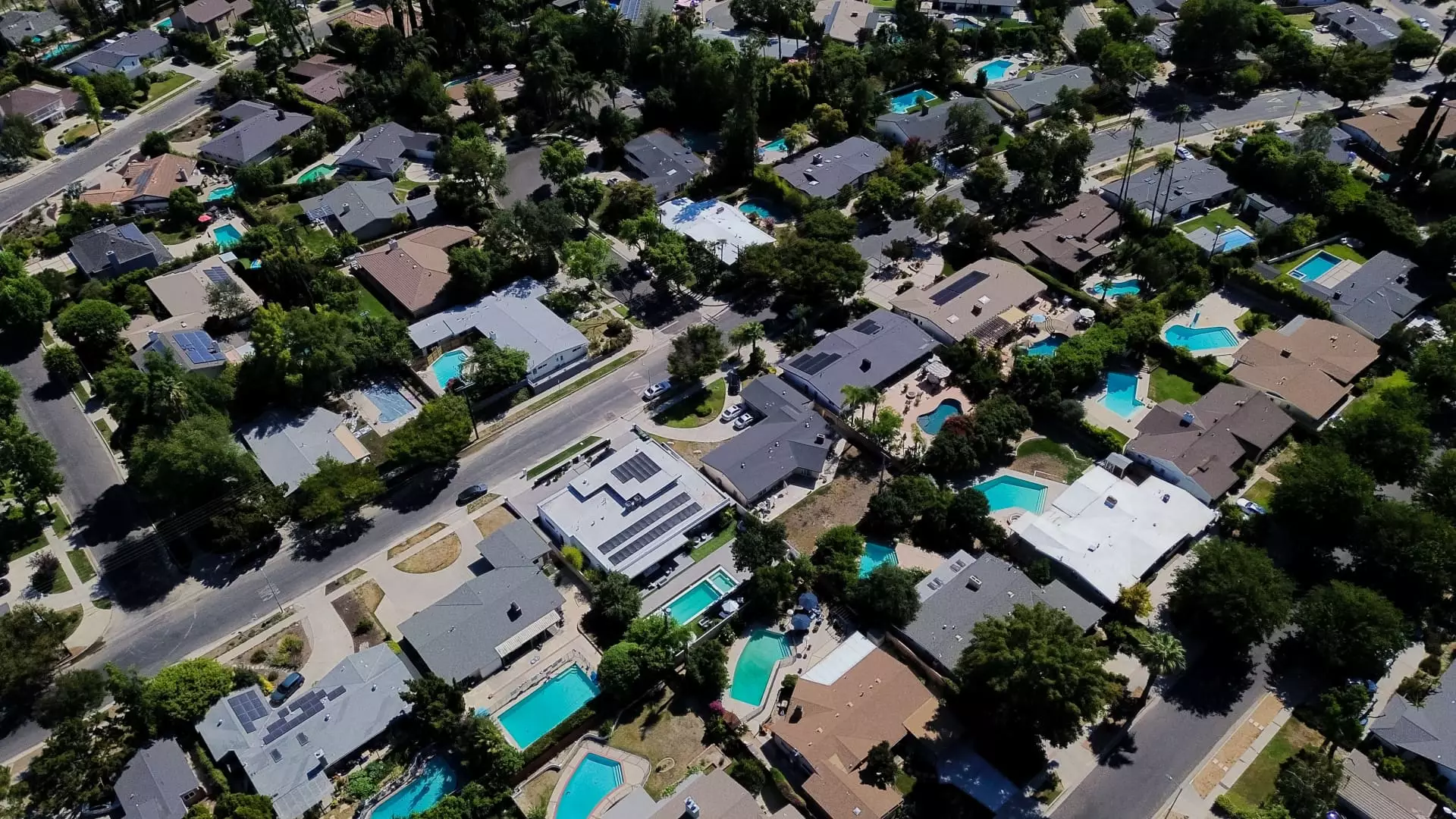The recent report from the National Association of Realtors paints a bleak picture of the housing sector’s current state. A 2.7% drop in existing home sales in June — a drop far steeper than the expected 0.7% — underscores a market spiraling into uncertainty. While sales figures remaining static compared to June 2024 might suggest stability superficially, beneath the surface, the underlying tremors are unmistakable. This sharp decline reflects the broader economic conditions that have choked off first-time buyers and frustrated millions eager to enter the market. Instead of a steady recovery, what we are witnessing is a significant setback, exposing vulnerabilities that threaten to destabilize the core of any resilient economy.
The core issue haunting this sluggishness is the persistently high mortgage rates. Despite economic debates and policy interventions, mortgage rates stubbornly hover around 6.77%, a level that has become a barrier for many potential homeowners. Lawrence Yun’s analysis that a decline to 6% could unlock an additional 160,000 first-time buyers highlights a stark truth: affordability is in free fall, and with it, the dream of homeownership. High borrowing costs are not just a minor hurdle—they’re a lock on the market’s future, perpetuating a cycle of stagnation that benefits only the wealthiest and entrenched investors, while pushing the average American family further out of reach.
Supply and Demand: An Imbalanced Tug-of-War
While the number of homes for sale ticked up to 1.53 million units — a 15.9% increase year over year — the market remains critically undersupplied. With a 4.7-month supply at current sales pace, the imbalance is glaring. A balanced market requires around six months’ worth of inventory, meaning buyers still face a system stacked against them. This scarcity is a fertile ground for rampant price appreciation, which continues to outpace wage growth and economic productivity. The median sale price of $435,300, rising 2% annually and setting record highs—now for 24 consecutive months—further strangulates first-time buyers, whose pathways into the market are narrowing with each passing month.
This constrained supply, driven by persistent underbuilding, is an evident symptom rather than a cause. It signals a failure of policy and investment that could have mitigated the crisis years ago. Instead of addressing the fundamental issues, policymakers have allowed a cycle of overpriced homes and limited inventory to fester, creating a housing bubble rooted in artificially low supply and speculative investments.
Market Segmentation and Wealth Concentration Deepen Divides
A stark feature of the current housing landscape is the diverging performance between different market segments. Luxury homes priced above $1 million surged 14%, exemplifying the ongoing wealth concentration and pressing relevance of real estate as an asset class for the ultrarich. Conversely, homes priced below $100,000 declined 5%, highlighting how affordability is becoming an exclusive privilege rather than a universal commodity.
The trend reveals a troubling bifurcation: high-end real estate remains resilient and increasingly desirable, while entry-level buyers, vital for a healthy housing economy, hold less and less sway. Additionally, the average duration houses spend on the market increased from 22 to 27 days, indicating slowing demand—yet high-end homes still sell rapidly, underscoring that wealthier buyers have been insulated from broader economic pressures. This disparity feeds into a broader narrative of growing inequality, further accentuated by the stagnation of first-time buyer participation, now at only 30%, sharply below the historical average of 40%.
Furthermore, an unsettling 29% of transactions continue to be cash deals, an indicator of how detached the market has become from everyday Americans. Pre-COVID, cash sales hovered around 20%, suggesting a significant rise in speculative and investment activity—possible signs of a market at risk of overheating due to capital influx from the wealthy.
The Debt Dilemma and the Future Outlook
The current environment raises serious questions about the sustainability of this housing bubble. Higher mortgage rates, coupled with a scarcity of affordable options, threaten to create a perfect storm: a market where only the affluent can participate, while the majority are priced out. As homes take longer to sell, and offers per listing decrease slightly, the market hints at a possible turning point—though not necessarily a correction that benefits buyers. Instead, it might culminate in a prolonged period of stagnation or worse, a correction that leaves middle and working-class households even more disenfranchised.
The trajectory relying on continued economic growth and falling mortgage rates appears optimistic at best. Without decisive policy intervention—such as incentivizing affordable construction, easing entry barriers, and addressing supply shortages—the housing crisis risks deepening, with ripple effects across other sectors of the economy. It’s no exaggeration to consider this an emergency governance issue, demanding urgent reforms that prioritize the economic mobility of the average family over superficial market stability for the privileged few.


Leave a Reply